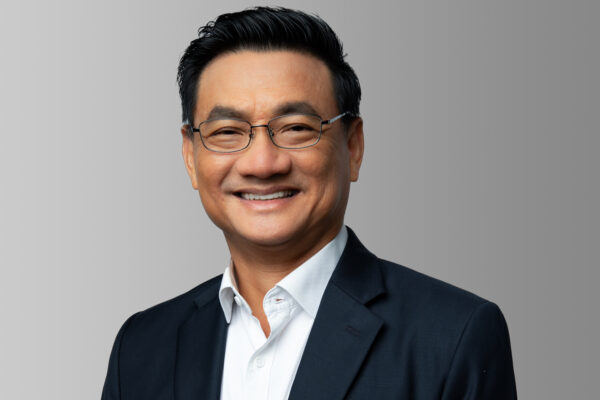
With unpredictable markets increasingly driven by governments and central bank policies, private banks are transitioning from asset collection towards a business model of effective investment management for wealthy clients, thereby improving revenue streams.
In a bid to both protect assets and drive client growth, managers of wealth are substituting the ‘buy and hold’ portfolio strategy of the past with dynamic asset allocation, typically based on identification and implementation of investment themes.
Central to this move has been the nomination of a chief investment officer (CIO), supported by a team of investment professionals, coordinating a house view for the entire private bank, filtering down to advisers and product development teams, as well as clients. This has increased effectiveness, timing and consistency of the advisory process, while improving economies of scale. The shift was driven, especially at larger wealth managers and private banks, by the need to better manage risk and reduce cost, also allowing institutions to better comply with evolving regulation.
The remit of the CIO has also broadened. “Historically their responsibility focused on defining and communicating strategic asset allocation,” observes João Miguel Rodrigues, partner, private capital, financial services at consulting firm Oliver Wyman. “They are now often ultimately responsible for the full investment product shelf.”
Three key differentiating factors for chief investment offices
Asset allocation
Internal process and operating model
Advocacy and reputation
Source: Oliver Wyman
At UBS, the world’s largest wealth manager, the CIO role was created in Switzerland in 2011. Today, the bank’s chief investment office comprises 1200 investment professionals operating from 19 financial hubs.
Rather than “a confederation of independent analysts publishing contradictory research papers”, UBS’ chief investment office is “a buy side team that builds real investment portfolios with about $2tn in client assets managed to the house view,” explains UBS Global Wealth Management’s CIO Mark Haefele.
Greater scale has allowed investing in “better and more extensive services” for clients, including coverage of more than 3000 stocks and 15,000 bonds. While access to platforms, investments, and knowledge makes investing easier, “investing well without expert guidance may be harder than ever,” says Mr Haefele.
There are many competing approaches on the ‘right’ way to invest and the 24-hour news cycle “reinforces negative behavioural traits like overreaction and short-termism”. Aligning with the CIO’s views can enable clients “to strike a better balance between systematic long-term asset allocation, minimising behavioural biases, and opportunistic tactical allocation”.
Investment themes
Megatrends beyond sectors, countries and styles, are increasingly informing creation of investment solutions at private banks. “Our job is to talk to the most knowledgeable and influential clients, academics and investors, do our analysis, figure out how the world works, and express that view through investments,” says Mr Haefele.
The bank continues to see “strong” client demand for thematic investing, with long-term investment horizons of thematic investments often matching families’ ambitions to protect and grow wealth across generations.

Most potential is found in themes linked to sustainability, automation and robotics, including artificial intelligence (AI). Health and medical technology, water scarcity, the broad theme of security, including energy, national, and cyber, and energy transition also receive much attention.
“As with all long-term themes it’s not only about identifying the right theme but also the companies and parts of the value chain best positioned to capture value from growth of those themes,” says Mr Haefele. He recommends “clients keep a diversified exposure both within and across themes”, as long-term investment themes are subject to short-term changes in popularity.
Big investment ideas resonate especially strongly with ultra-high net worth (UHNW) clients, says Hou Wey Fook, DBS Bank’s CIO in Singapore. These themes impact not only the clients’ sizeable portfolio investments but also the business they control.
“Topics including geopolitics, climate change and the digital economy shape the direction and arc of markets, economies, and our futures,” says Mr Hou, with clients expressing “great interest” in thematic publications, which “enrich the breadth and depth of investment discussions between advisers and clients”.
Rise of alternatives
Over the past two decades the CIO has had to become more competent in alternative assets. While looking for quality plays in the equity and bond space, DBS recommends clients seek opportunities in private equity secondaries and private credit. These provide diversification benefits, allowing investors to hedge against economic headwinds through dislocations and defaults.
At UBS, client demand for private markets has grown more than 30 per cent annually for the last five years, reports UBS GWM’s CIO Americas Solita Marcelli. Placing the CIO value chain “more squarely” at the heart of the investment process has been a “driving force behind the CIO’s success”, she says.
Importance of alternative assets has grown considerably, opportunities have expanded and investors have realised the benefits of holding them in portfolios, including diversification and excess return, confirms Willem Sels, global CIO at HSBC Global Private Banking and Wealth.
He also notes investors have become more global in their approach, with importance of emerging markets growing considerably. “While in the past clients had more of a trading mentality, particularly in Asia, there has been a near universal move to a portfolio-based approach,” he says, with investors building a diversified portfolio, including thematic investments, rather than a collection of trades and stocks.
Conversations with clients help identify ideas and patterns. “Many clients are entrepreneurs with business activities in their home markets and around the world, with their ear to the ground on real trends in the economy, so they are sharing anecdotes and data points about inflation, consumer optimism and behaviour, and supply chain reorientation,” says Mr Sels. “These are great additions to the trends we gather from macro data and company reports.”
But investment opportunities need to be supported by product selection. “If we have a great idea that is not implementable, that idea is useless,” he says. “A narrow investment theme may not have a ‘pure play’ stock or fund implementation and hence many themes that look attractive are not viable.”
Economic regime change
Another key challenge is that long-term trends tend to focus on growth-style companies, “often with a big tech angle, which makes them highly interest-rate sensitive”, says Mr Sels. Rising interest rates led to the underperformance of most thematic funds against broader market indices last year, he adds, inviting clients to consider US healthcare, durable dividends and infrastructure.
“We are living in a period of regime change for the economy, to a world with higher rates than the last cycle, and a higher resting heartbeat for inflation, which leaves less room for shocks,” states Marci McGregor, Bank of America Merrill Lynch’s head of CIO portfolio strategy.
Positioning for the ‘new regime’ will be important, says Ms McGregor. Some investment trends are “glacially” changing the world, including longevity and demographic trends and their impact on healthcare and re-organisation of supply chains, “which is more about risk management in today’s world, rather than cost”.

Differentiating factors
Wealthy clients want to see portfolios aligned with investment themes identified by their bank, but they also expect to see how the CIO’s views differ from the overall financial industry, says Didier Duret, chairman of Omega Wealth Management and former ABN Amro Private Banking’s CIO. Yet, when it comes to investment themes, he notes a “professional crowd bias and a certain conformity due to the unifying role that the CIO is expected to have in large private banks”.
While generic themes can be skilfully translated into actionable products, specific or intra thematic selection is more difficult to achieve, he says. “With investment themes, the devil is in the detail and implementation timing.”
Key success factors for implementing CIO views into portfolios are clarity of purpose, ‘rightsizing’ of positions and capacity to demonstrate how they benefit the risk/return of client portfolios. It is also important that the CIO office hones its “art to compose global trends with local context”, adds Mr Duret.
What really differentiates CIOs is strategic asset allocation, which typically determines investment performance, argues Oliver Wyman’s Mr Rodrigues. This explains why leading wealth managers’ CIOs are investing heavily in a centralised approach, including macro research and alternative data.
But CIOs must implement “standardised processes and control systems” to make sure their allocation recommendations are properly communicated to relationship managers and implemented in client portfolios.
“Most relationship managers need to understand the job of ‘hobbyist portfolio manager’ no longer exists,” says Mr Rodrigues, highlighting the importance of a “superior process” for tactical asset allocation.
Brand power
Technology is an important “enabler” to ensure standardised processes are followed. It can also improve performance in client portfolios, helping advisers conduct deeper conversations with clients and allowing them to offer more personalised advice. AI-generated alerts and insights provide clients with real time insights into market data and portfolio performance.
While digitalisation is crucial, so is training investment professionals on both technical and soft skills. As the world has become noisier and “more driven by soundbites”, clarity of communication and consistency have become more important for the CIO team, confirms UBS’s Mr Haefele. “Writing a 200-page research report and expecting advisers and clients to read it is not the job. if it doesn’t make a positive change in a client’s portfolio, it is a waste of time or worse,” he says.
The UBS house view, he says, is concentrated into a select number of ‘messages in focus’. This makes it “straightforward” for the CIO team to distill views on the world into “actionable ideas”, and for advisers to understand the view and what it means for portfolios.
Finding an appropriate ‘source of funds’ can be challenging, as it is often easier to identify investments to buy than investments to sell, especially if at a loss, says Mr Haefele, stressing the importance to think in a “total portfolio context and avoid anchoring on individual trades and positions”.
Despite advanced technology, goal-based investment frameworks and greater focus on training advisers, a major challenge to timely implementation of asset allocation calls in portfolios is posed by clients’ emotions.
“Amid uncertainty in the market and macro environment, we are seeing clients with elevated cash levels,” acknowledges Bank of America Merrill Lynch’s Ms McGregor. Bankers use every opportunity to advocate for a balanced approach to portfolio construction, stress the importance of a strategic anchor for asset allocation, and highlight perils of market timing.
“Similar to taking on too much risk, taking too little risk impacts ability of clients to reach long-term goals,” she warns.
Investments are the single most important product and service which private banks provide to clients and it is vital for CIOs to have a strong reputation and brand among advisers and clients, believes Oliver Wyman’s Mr Rodrigues, as this can help ensure recommendations are implemented.
Looking to the future, extensive use of generative AI to crunch big data will allow testing and implementation of new models amid the complex reality of investing, believes Omega’s Mr Duret. “The future of the CIO will be shaped by tech openness, strong governance standards, independent mindset – and particularly their imaginative skills.”






